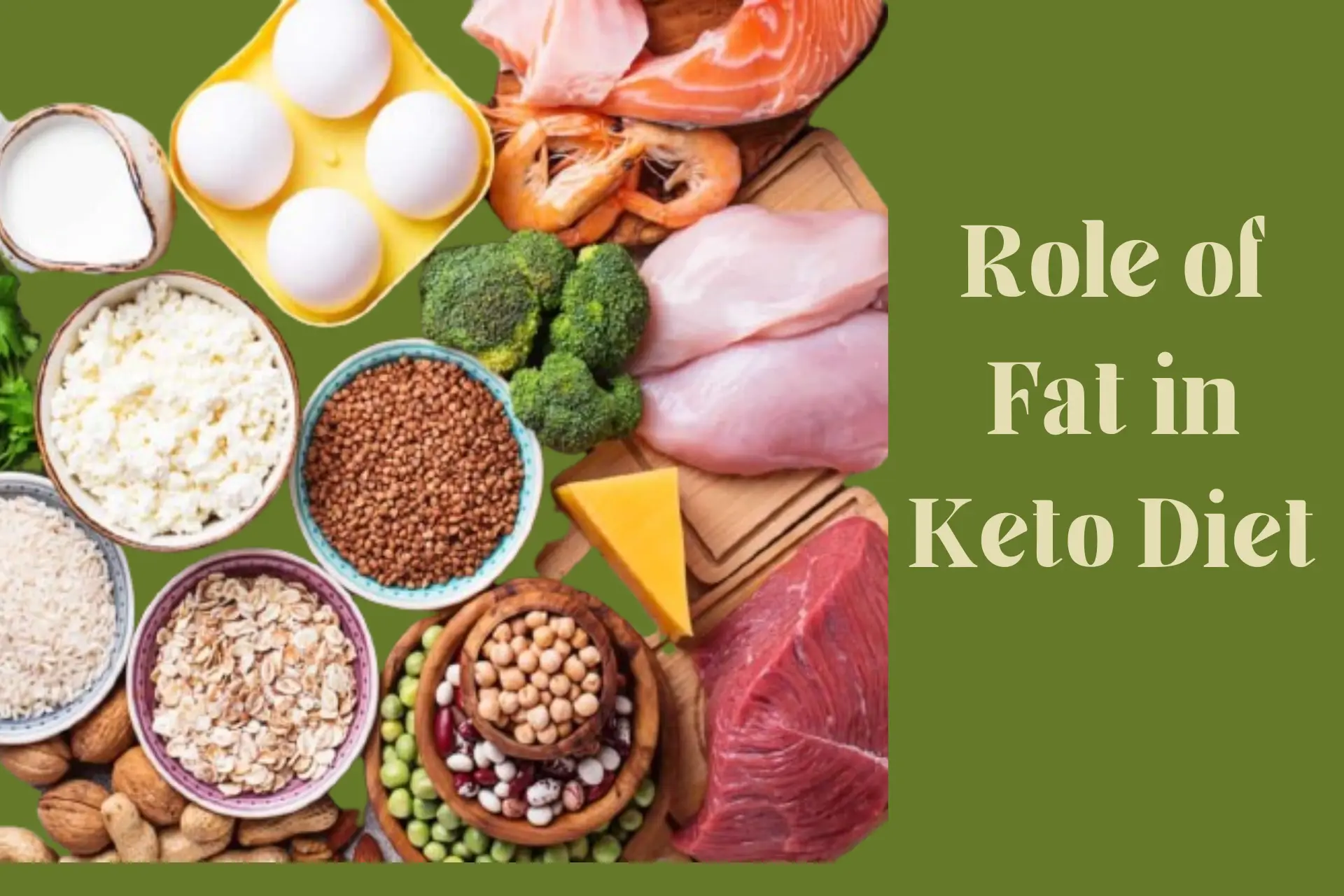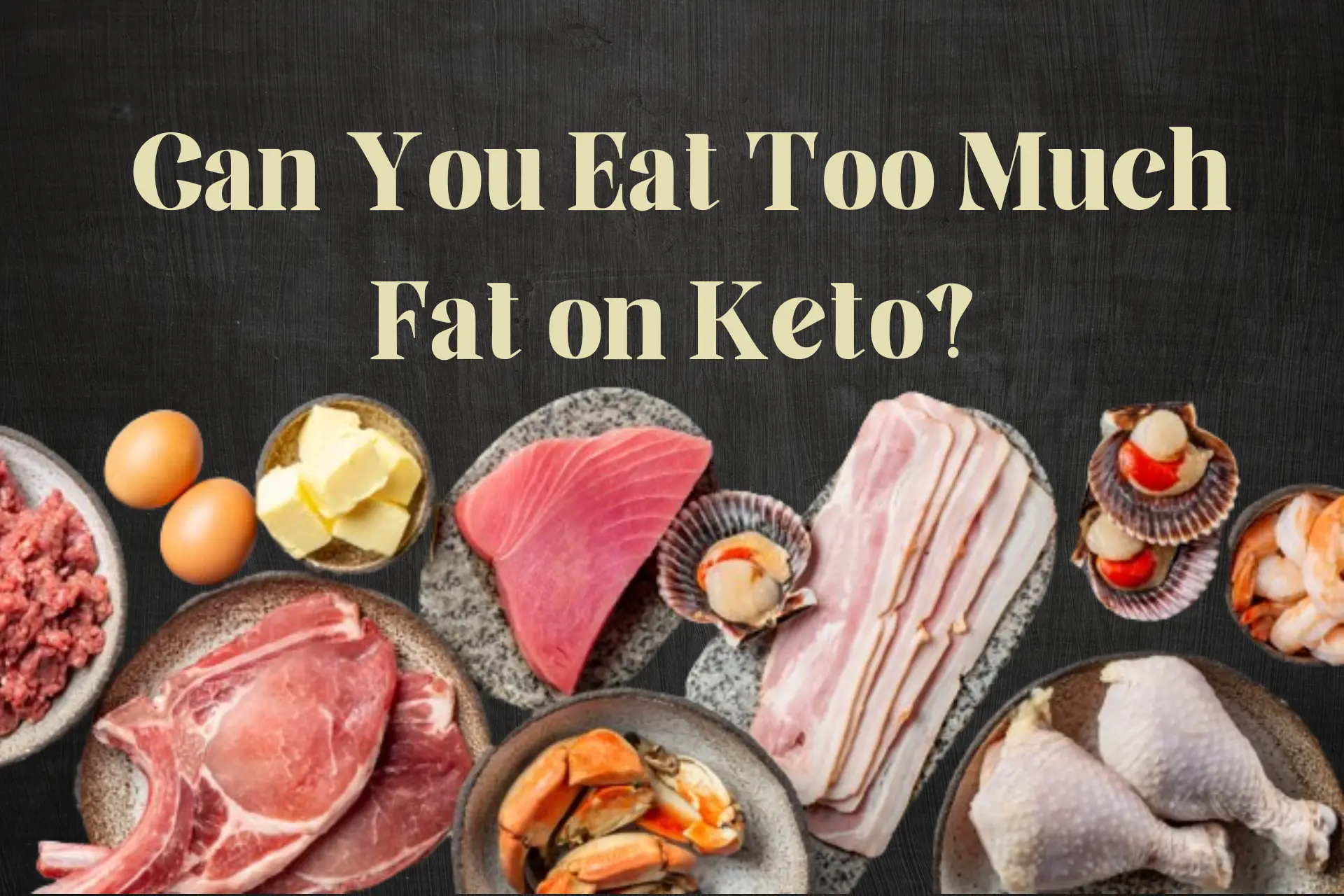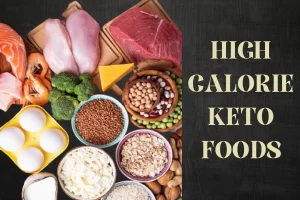Can You Eat Too Much Fat on Keto Diet?
Can you eat too much fat on Keto Diet – Are you following a ketogenic diet and wondering if it’s possible to consume too much fat? The ketogenic diet, known for its low-carb, high-fat approach, has gained popularity for its potential health benefits and weight loss effects. However, like any dietary plan, it’s essential to understand the balance required to achieve optimal results without overdoing it on any particular nutrient, including fat on keto diet.
Table of Contents
Understanding the Ketogenic Diet
The ketogenic diet is a low-carbohydrate, high-fat diet that aims to shift the body’s metabolism into a state of ketosis. In ketosis, the body burns fat for fuel instead of carbohydrates, leading to weight loss and other potential health benefits.
Key components of the keto diet include consuming moderate protein, very low carbohydrates, and high amounts of healthy fats.
When following a ketogenic diet, the primary goal is to keep carbohydrate intake low to maintain ketosis. This means focusing on foods like meat, fish, eggs, nuts, seeds, avocados, and healthy oils like olive oil and coconut oil. These foods provide the necessary fats to fuel the body and support ketosis.
Also Read: High Calorie Keto Foods
The Role of Fat on Keto Diet

Fat is a crucial component of the ketogenic diet as it serves as the primary source of energy when carbohydrates are restricted. Consuming adequate amounts of healthy fats is essential for maintaining energy levels, supporting hormone production, and promoting satiety on a low-carb diet.
Healthy fats, such as monounsaturated and polyunsaturated fats found in foods like avocados, nuts, seeds, and oily fish, are preferred on the ketogenic diet. These fats provide essential nutrients and help reduce inflammation in the body, supporting overall health and well-being.
Balancing Fat Intake on Keto Diet
While fat is a significant part of the ketogenic diet, it is possible to consume too much fat, which can hinder weight loss and impact overall health. Overeating fat on a keto diet can lead to an excess of calories, which may prevent the body from burning stored fat for energy.
To avoid consuming too much fat on a ketogenic diet, it’s essential to focus on portion control and choose healthy sources of fats. Incorporating a variety of fats from different sources can help ensure a balanced intake of essential nutrients while preventing excessive calorie consumption.
Also Read: Get Your Customized Keto Meal
Monitoring Fat Intake and Adjusting as Needed
Tracking your fat intake on a ketogenic diet can help you understand how much you’re consuming and make adjustments if necessary.
Paying attention to portion sizes, reading food labels, and using tools like food tracking apps can assist in monitoring your fat intake and staying within your desired range.
If you find that you’re not seeing the desired results on a ketogenic diet, such as weight loss or improved energy levels, it may be helpful to reassess your fat intake. Adjusting the amount and types of fats you consume can help fine-tune your ketogenic diet for optimal results.
To calculate your daily fat intake on a ketogenic diet, you can use a keto calculator that determines the daily calories and grams of proteins, carbs, and fats necessary to remain in ketosis.
Also Read: Answer This Simple Question & Get Your Customized Keto Meal
How To Calculate Intake of Fat on Keto Diet
The calculation involves determining your daily calorie intake based on factors like age, gender, weight, and height using the Mifflin-St Jeor BMR formulas.
Once your total daily energy expenditure in calories is known, the macronutrient percentages are applied to determine the daily protein, carbohydrate, and fat calories.
The ketogenic diet typically involves consuming 60 to 75% of calories from fat, 15-30% from protein, and 5-10% from carbs. To convert these percentages into grams, the following rules are applied: 1 gram of protein equals 4 kcal, 1 gram of carbohydrate equals 4 kcal, and 1 gram of fat equals 9 kcal.
To calculate your specific fat intake, you can adjust your macro guidelines based on your age, body weight, BMI, and physical activity level using tools like the Perfect Keto macro calculator. For example, someone consuming 2,000 calories a day with a fat intake of 70-80% would aim for around 144-177 grams of fat daily.
In summary, to calculate your daily fat intake on a keto diet:
1. Use a keto calculator to determine your daily calorie needs.
2. Apply the macronutrient percentages (60-75% fat, 15-30% protein, 5-10% carbs) to calculate the grams of protein, carbs, and fats.
3. Adjust your fat intake based on your specific requirements using tools like the Perfect Keto macro calculator.
By following these steps and customizing your fat intake based on your individual needs, you can effectively manage your fat consumption on a ketogenic diet.
Common mistakes to avoid while calculating daily fat intake on keto diet
When calculating daily fat intake on a keto diet, it’s crucial to avoid common mistakes to ensure you’re following the diet correctly and optimizing your results. Here are some common mistakes to avoid:
1. Poor Meal Planning: Inadequate meal planning can lead to impulsive food choices that may not align with the keto diet. It’s essential to plan your meals in advance, choose keto-friendly snacks, and create a weekly menu to stay on track with your fat intake.
2. Not Calculating Your Macros: Incorrectly calculating your macronutrients (carbs, fats, and proteins) can result in an imbalance that hinders your progress on the keto diet. Each person has unique macro needs, so it’s essential to calculate your individual macros based on factors like exercise level and weight to avoid this mistake.
3. Eating Too Many of the Wrong Foods: Consuming poor-quality foods high in unhealthy fats can negatively impact your health and weight loss goals on a keto diet. Focus on consuming unprocessed foods, high-quality fats, organic meats, and nutrient-dense vegetables to support your body and energy levels.
4. Lacking Electrolytes: Electrolyte imbalances can lead to symptoms like fatigue, brain fog, and muscle cramps, commonly experienced during the initial stages of the keto diet. Ensure you’re replenishing electrolytes through foods or supplements to avoid these issues and support your overall well-being.
5. Not Eating Enough Fat: Dietary fat is a crucial fuel source on the keto diet, and inadequate fat intake can hinder your progress. Aim to consume healthy fats that make up 70-80% of your daily calories to support ketosis and provide sustained energy levels.
By being mindful of these common mistakes and taking proactive steps to calculate your fat intake accurately, plan your meals effectively, and choose high-quality foods, you can navigate the keto diet successfully and optimize your fat consumption for optimal results.
Also Read – Can You Eat Dairy on Keto?
Conclusion: Can You Eat Too Much Fat on Keto Diet?
In conclusion, while fat is a vital component of the ketogenic diet, it is possible to eat too much fat, which can impact your health and weight loss goals. By focusing on consuming healthy fats in moderation, monitoring your fat intake, and making adjustments as needed, you can maintain a balanced ketogenic diet that supports your overall well-being.
Remember, the key to success on a ketogenic diet lies in finding the right balance of fats, proteins, and carbohydrates to achieve your desired outcomes. With mindful eating and a focus on quality nutrients, you can enjoy the benefits of the ketogenic diet without overindulging in fat.
Frequently Asked Questions
How much fat is allowed on keto?
To determine how much fat is allowed on a keto diet, the recommended fat intake varies based on individual factors like calorie requirements, weight goals, and metabolic needs. Generally, on a standard keto diet, fat intake should make up about 70-75% of your daily calories, with protein around 20-25% and carbs at 5-10%. For example, for someone consuming 2,000 calories a day, this translates to approximately 144-177 grams of fat daily. It’s crucial to focus on healthy fats from sources like olive oil, avocados, nuts, seeds, fatty fish, and animal fats while avoiding trans fats for optimal health and weight loss on a ketogenic diet.
What is best fat for keto?
The best fats for a keto diet are those that are rich in healthy monounsaturated and saturated fats. Foods like avocados, olive oil, fatty fish, nuts, seeds, coconut oil, and butter from grass-fed cows are excellent choices for a ketogenic diet. These fats provide essential nutrients, support overall health, and help maintain ketosis, making them ideal options for individuals following a keto lifestyle.
What happens to fat on keto?
On a ketogenic diet, fat plays a crucial role as the primary source of energy for the body. When following a keto diet, the body shifts from using carbohydrates as its main energy source to burning fat for fuel. This metabolic state, known as ketosis, leads to the production of ketones, which are used by the body and brain for energy. By increasing fat intake and reducing carbohydrates, the body becomes more efficient at utilizing fat stores for energy, aiding in weight loss and promoting overall health on a ketogenic diet.
How do you calculate keto fat?
To calculate the amount of fat you should consume on a keto diet, you can use a keto calculator to determine your personalized macros ratio. Typically, on a ketogenic diet, fat should make up around 70% or more of your daily calorie intake, with protein at about 25% and carbohydrates at 5%. This means that for a 2,000 calorie diet, you would aim to consume approximately 144 grams of fat per day. By adjusting your macronutrient intake based on your individual factors like age, gender, weight, and activity level, you can tailor your fat consumption to support ketosis and optimize your health goals on a keto diet.



